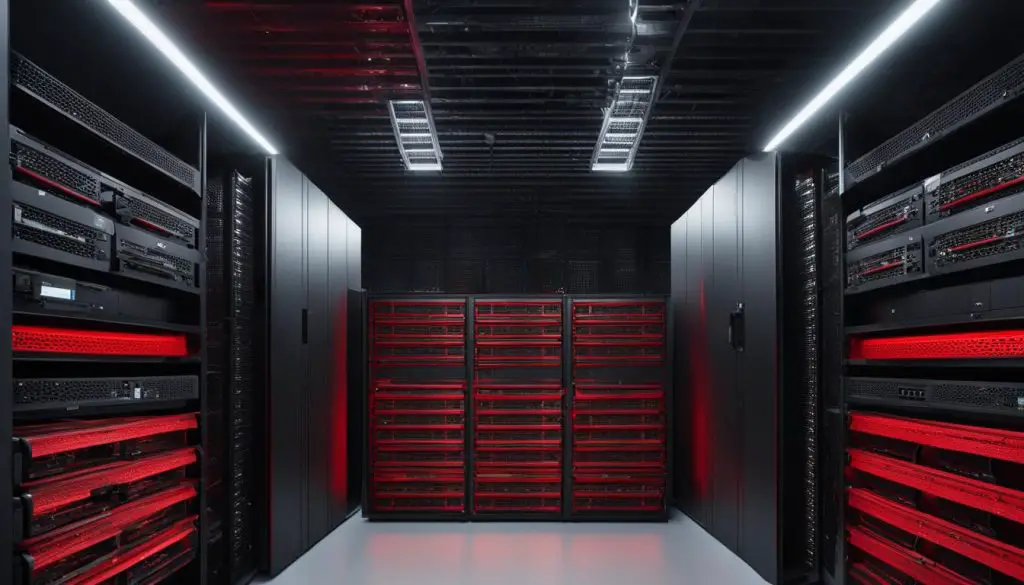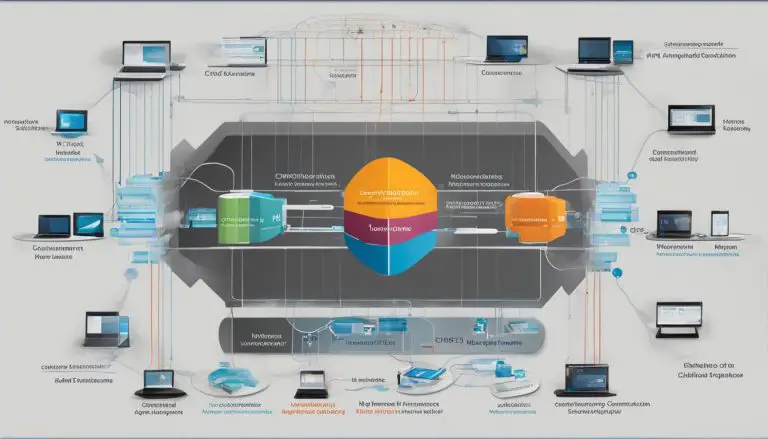Unveiling What is Red Hat Enterprise Linux: Your IT Solution
As an IT professional, you may have heard of Red Hat Enterprise Linux (or short: RHEL) but may be wondering what exactly it is and how it can benefit your organization. In this article, I will provide you with an overview of Red Hat Enterprise Linux, its features, and why it is considered an enterprise-grade Linux solution.
Red Hat Enterprise Linux, also known as Red Hat Linux, is an open-source operating system developed by Red Hat for the commercial market. It is designed to provide enterprises with a reliable, secure, and scalable platform for running their applications. RHEL is known for its stability and support and is widely used in servers, mainframes, supercomputers, and workstations.
One of the key features of Red Hat Enterprise Linux is its enterprise-grade capabilities. It offers high availability, smart management, and support for large deployments, making it an ideal choice for businesses with demanding workloads. Additionally, Red Hat Enterprise Linux provides insights and monitoring capabilities through Red Hat Insights, allowing organizations to proactively detect and resolve issues in their operating environment.
Red Hat Enterprise Linux is available in different versions, with the latest release being Red Hat Enterprise Linux 9.0. It offers a range of editions, including server and desktop variants, to meet the specific needs of different users. For development purposes, Red Hat offers a free subscription of Red Hat Enterprise Linux, allowing developers to explore and experiment with the platform.
Key Takeaways:
- Red Hat Enterprise Linux is an open-source, enterprise-grade Linux distribution developed by Red Hat.
- It provides reliable performance, security, and scalability for a wide range of applications and environments.
- Red Hat Enterprise Linux offers high availability, smart management, and support for large deployments.
- It is available in different versions and editions, including a free subscription for development purposes.
- Red Hat Enterprise Linux is widely used in servers, mainframes, supercomputers, and workstations.
Red Hat Enterprise Linux Overview
Red Hat Enterprise Linux (RHEL) is a powerful and versatile operating system designed for the commercial market. It offers businesses a reliable, secure, and scalable platform to meet their IT needs. RHEL is built on open-source software, making it a cost-effective and flexible solution. Available in different versions and editions, Red Hat Enterprise Linux caters to a wide range of environments and applications.
Red Hat Enterprise Linux has a rich history of development, with the latest release being Red Hat Enterprise Linux 9.0. Previous versions include 8.8 and 7.9. Each release brings new features, improvements, and optimizations to enhance the overall performance and reliability of the operating system.
Red Hat offers various editions of RHEL, including server and desktop variants. The server subscription is available for development purposes at no cost, making it an excellent choice for businesses that want to explore and test the capabilities of Red Hat Enterprise Linux. Additionally, there are academic editions tailored for educational institutions and students, ensuring that the next generation of professionals can benefit from this robust operating system.
With its wide range of offerings and continuous development, Red Hat Enterprise Linux remains a top choice for businesses seeking a reliable and versatile operating system for their IT infrastructure.
Red Hat Enterprise Linux Versions
| Version | Release Date |
|---|---|
| Red Hat Enterprise Linux 9.0 | 2021 |
| Red Hat Enterprise Linux 8.8 | 2020 |
| Red Hat Enterprise Linux 7.9 | 2019 |
Red Hat Enterprise Linux Offerings
- Server Edition: A powerful and scalable solution for running critical applications and services.
- Desktop Edition: Designed for individual users and workstations, offering a user-friendly interface and productivity tools.
- Academic Edition: Tailored for educational institutions and students, providing access to the full capabilities of Red Hat Enterprise Linux.
Features of Red Hat Enterprise Linux
Red Hat Enterprise Linux offers a range of features and capabilities that make it a popular choice for businesses. One of the key features is its high availability, which ensures that critical applications and services are always accessible and minimizes downtime. Red Hat Enterprise Linux also provides smart management tools, allowing administrators to efficiently manage and monitor their systems. This includes centralized management, automation, and monitoring capabilities, making it easier to deploy and manage large-scale deployments.
Another significant feature of Red Hat Enterprise Linux is its support for large deployments. Whether organizations require a few servers or thousands of systems, Red Hat Enterprise Linux can scale to meet their needs. It provides robust performance even under heavy workloads, ensuring that businesses can handle the demands of their applications without compromising on reliability or speed.
Red Hat Enterprise Linux also offers Red Hat Insights, a powerful tool that provides insights and monitoring capabilities. With Red Hat Insights, organizations can proactively detect problems, optimize their operating environment, and make informed decisions to improve performance and security. This empowers businesses to take a proactive approach to their IT infrastructure, identifying potential issues before they impact operations.
Furthermore, Red Hat Enterprise Linux supports a wide range of hardware architectures, including x86-64, Power ISA, ARM64, and IBM Z. This flexibility allows businesses to choose the platform that best suits their needs, whether it’s high-performance x86 servers or the reliability of IBM Z mainframes. With its enterprise-grade security, performance, and scalability, Red Hat Enterprise Linux provides businesses with a reliable and flexible operating system.
Red Hat Enterprise Linux and SAP Solutions
Red Hat Enterprise Linux is a preferred platform for running SAP applications and environments. With Red Hat Enterprise Linux for SAP Solutions, organizations can integrate, manage, or merge heterogeneous SAP software environments on a single, standardized platform. Red Hat Enterprise Linux is fully certified and supported for SAP HANA and SAP NetWeaver, providing a reliable and optimized environment for running SAP workloads. In addition, Red Hat Enterprise Linux for SAP Solutions is available on IBM Power Systems, offering a powerful choice for organizations running next-generation AI and machine learning applications fueled by SAP solutions.
Red Hat Enterprise Linux for SAP Solutions
“Red Hat Enterprise Linux provides a reliable and optimized platform for running SAP applications. With its excellent performance, scalability, and security features, it offers a seamless integration between SAP software and the underlying operating system. Organizations can benefit from the certified and supported environment of Red Hat Enterprise Linux, ensuring smooth operations and high availability for their mission-critical SAP workloads.”
The partnership between Red Hat and SAP ensures ongoing collaboration, optimization, and support for running SAP solutions on Red Hat Enterprise Linux. This partnership enables organizations to leverage the combined expertise of both companies, resulting in a powerful and reliable platform for their SAP software. Red Hat Enterprise Linux for SAP Solutions offers enhanced performance, advanced security features, and optimized resource management, all tailored to meet the demanding requirements of SAP workloads.
By choosing Red Hat Enterprise Linux for SAP Solutions, organizations can benefit from a robust and proven platform that provides the necessary performance, scalability, and security for running SAP applications. The integration with SAP HANA and SAP NetWeaver, along with support for IBM Power Systems, further strengthens the capabilities of Red Hat Enterprise Linux for SAP Solutions. With this combination, organizations can confidently deploy and manage their SAP workloads, unlocking new levels of performance and efficiency.
Red Hat Enterprise Linux 8.2 Updates
Red Hat Enterprise Linux 8.2 introduces several updates to enhance the platform. One of the notable updates is the inclusion of Red Hat Insights, which provides intelligent management and monitoring capabilities to help organizations proactively detect problems and optimize their environment. With Red Hat Insights, businesses can gain valuable insights into their systems, improve security, and optimize performance.
In addition to Red Hat Insights, Red Hat Enterprise Linux 8.2 brings enhanced container tools, offering organizations better capabilities to leverage container technology for their applications. These enhanced tools allow for easier management and deployment of containerized workloads, enabling businesses to modernize their application infrastructure and take full advantage of the benefits that containers provide.
Furthermore, Red Hat Enterprise Linux 8.2 focuses on improving the overall user experience. Whether you are a Linux expert or new to the platform, the updated version offers a smoother and more intuitive user interface, ensuring ease-of-use and productivity for all users. Red Hat understands the importance of providing a user-friendly environment and continues to make improvements to enhance the overall experience for its users.
Key Updates in Red Hat Enterprise Linux 8.2:
- Inclusion of Red Hat Insights for intelligent management and monitoring
- Enhanced container tools for improved containerization capabilities
- User experience improvements for a smoother and more intuitive interface

| Updates | Description |
|---|---|
| Red Hat Insights | Intelligent management and monitoring capabilities for proactive problem detection and optimization |
| Enhanced Container Tools | Improved capabilities for managing and deploying containerized workloads |
| User Experience Improvements | Smoother and more intuitive interface for enhanced ease-of-use and productivity |
Relationship with Fedora Linux
Fedora Linux plays a crucial role in the development and evolution of Red Hat Enterprise Linux (RHEL). As an upstream source, Fedora serves as a community-supported distribution and project sponsored by Red Hat. It allows for rapid innovation and the introduction of new technologies that eventually make their way into the stable and enterprise-ready releases of Red Hat Enterprise Linux (RHEL). This synergistic relationship between Fedora and RHEL enables Red Hat and its contributor community to push the boundaries of Linux and deliver cutting-edge features and enhancements.
RHEL is built on the solid foundation established by Fedora, benefiting from its continuous development and testing. While Fedora is geared towards early adopters and enthusiasts, RHEL is designed to cater to the needs of enterprise users, delivering a stable, secure, and supported operating system. The development cycles of Fedora and RHEL are separate but interconnected, allowing for collaboration and knowledge-sharing between the communities.
Additionally, CentOS Stream plays a significant role in the relationship between Fedora and RHEL. CentOS Stream provides updates and compatibility testing between Fedora and RHEL, ensuring a smooth transition and compatibility between the two distributions. This close collaboration ensures that the advancements made in Fedora trickle down to RHEL, allowing for a seamless integration of new features and technologies.
| Fedora Linux | Red Hat Enterprise Linux |
|---|---|
| Community-supported distribution | Commercial enterprise operating system |
| Rapid innovation and early adoption | Stable and enterprise-ready releases |
| Continuous development and testing | Focus on stability, security, and support |
| Collaboration and knowledge-sharing | Close integration and compatibility |
The Future of Fedora and Red Hat Enterprise Linux
The collaboration between Fedora and Red Hat Enterprise Linux will continue to shape the future of Linux in the enterprise space. As Fedora evolves and introduces new technologies, Red Hat Enterprise Linux benefits from these advancements. This symbiotic relationship ensures that RHEL remains at the forefront of enterprise-grade Linux solutions, delivering the performance, security, and scalability that businesses rely on.
Furthermore, the strong ties between Fedora and Red Hat Enterprise Linux provide a solid foundation for open-source collaboration and innovation. The continuous development and feedback loop fostered by this relationship contribute to the overall growth and improvement of the Linux ecosystem, benefiting the entire community of users and developers.
In conclusion, the relationship between Fedora and Red Hat Enterprise Linux is one of mutual support and collaboration. Fedora serves as the upstream source for RHEL, driving innovation and pushing the boundaries of Linux technology. The continuous development and integration between these two distributions ensure that Red Hat Enterprise Linux remains a leading choice for enterprise users seeking a stable, secure, and supported operating system.
Red Hat Enterprise Linux Derivatives
Red Hat Enterprise Linux has served as the foundation for various rebuilds and derivatives created by different communities and organizations. These derivatives offer alternative distributions based on Red Hat Enterprise Linux, with non-free components and trademarks removed. Let’s take a closer look at some of these rebuilds:
CentOS
 One of the most well-known Red Hat Enterprise Linux derivatives is CentOS. It aims to provide a free, community-supported operating system that is compatible with Red Hat Enterprise Linux. CentOS offers a stable and reliable Linux distribution that is widely used in the enterprise environment.
One of the most well-known Red Hat Enterprise Linux derivatives is CentOS. It aims to provide a free, community-supported operating system that is compatible with Red Hat Enterprise Linux. CentOS offers a stable and reliable Linux distribution that is widely used in the enterprise environment.
Oracle Linux
Oracle Linux is another popular rebuild of Red Hat Enterprise Linux. It is developed and maintained by Oracle and is designed to optimize performance and reliability for Oracle’s software stack. Oracle Linux provides enterprise-class support and is certified to run Oracle Applications, Oracle Database, and other Oracle software.
AlmaLinux
AlmaLinux is a community-driven rebuild of Red Hat Enterprise Linux, created as a replacement for CentOS after the shift in CentOS’s direction. AlmaLinux aims to provide a stable, free, and open-source alternative that is fully binary-compatible with Red Hat Enterprise Linux.
Rocky Linux
Rocky Linux is another community-driven project developed by members of the CentOS community. It is designed to be a downstream rebuild of Red Hat Enterprise Linux, providing a free and open-source operating system that is suitable for both production and development environments.
These Red Hat Enterprise Linux derivatives offer users the choice to benefit from the stability and reliability of the Red Hat ecosystem while maintaining compatibility and support for enterprise environments. Whether it’s CentOS, Oracle Linux, AlmaLinux, or Rocky Linux, each rebuild has its own unique features and community support, providing options for organizations seeking alternative distributions based on Red Hat Enterprise Linux.
The Future of Red Hat Enterprise Linux
Looking ahead, Red Hat Enterprise Linux (RHEL) has an exciting future in store. With the upcoming release of RHEL 9, Red Hat is focused on advancing the development of its enterprise Linux platform, ensuring stability, security, and innovation for businesses and organizations. RHEL 9 will build upon the solid foundation of its predecessors, offering new features and enhancements to meet the evolving needs of modern IT environments.
One of the key aspects of the future of Red Hat Enterprise Linux is the formation of the Open Enterprise Linux Association (OpenELA). This association, consisting of Oracle, SUSE, and CIQ (the company behind Rocky Linux), aims to provide an open and free source code for Enterprise Linux. By collaborating and sharing resources, the OpenELA seeks to enhance the ecosystem of Red Hat Enterprise Linux and its derivatives, promoting interoperability and driving further innovation in the Linux community.
As Red Hat continues to invest in the development of RHEL, businesses can expect a continued focus on stability, security, and performance. Red Hat’s commitment to open source principles ensures that RHEL remains a trusted and reliable platform for critical workloads and applications. With its extensive support and certification programs, businesses can have peace of mind knowing that they have access to the expertise and resources necessary for a successful deployment and operation of Red Hat Enterprise Linux.
In summary, the future of Red Hat Enterprise Linux looks promising. With the upcoming release of RHEL 9 and the collaborative efforts of the Open Enterprise Linux Association, Red Hat is positioned to meet the evolving needs of modern IT environments while maintaining the stability and reliability that businesses have come to expect from the RHEL platform.
Benefits of Red Hat Enterprise Linux
Red Hat Enterprise Linux (RHEL) offers numerous advantages and benefits that make it a top choice for businesses and organizations. Its enterprise-grade features, reliability, and support provide a stable and secure operating system for various applications and environments.
One of the key benefits of using Red Hat Enterprise Linux is its collaboration with industry leaders like IBM and SAP. This collaboration ensures optimized performance and compatibility for running SAP applications, making it an ideal platform for businesses relying on SAP software. Red Hat Enterprise Linux provides a reliable and standardized environment for managing and integrating heterogeneous SAP software environments.
Another advantage of Red Hat Enterprise Linux is its modular nature. Organizations can customize their deployments based on their specific requirements, allowing them to tailor the operating system to suit their needs. This flexibility enables businesses to optimize their resources and streamline their IT infrastructure.
| Benefits of Red Hat Enterprise Linux |
|---|
| Enterprise-grade features and reliability |
| Optimized performance and compatibility for running SAP applications |
| Modular nature for customization and resource optimization |
| Extensive support and certification programs |
| Seamless integration with hybrid cloud environments |
Red Hat Enterprise Linux also offers extensive support and certification programs. Businesses can rely on Red Hat’s dedicated support team to provide assistance and resolve any issues that may arise. Additionally, Red Hat Enterprise Linux is backed by a robust certification program, giving organizations confidence in the reliability and compatibility of the platform.
Lastly, Red Hat Enterprise Linux seamlessly integrates with hybrid cloud environments. It provides a consistent and flexible platform for running cloud-native applications, allowing businesses to take advantage of the benefits offered by the cloud while maintaining control and security over their infrastructure. Red Hat Enterprise Linux ensures compatibility with major cloud providers and cloud management tools, enabling organizations to deploy and manage their applications across different cloud environments.
Red Hat Enterprise Linux for Development Purposes
Developers seeking to explore and experiment with the capabilities of Red Hat Enterprise Linux can take advantage of the free subscription offered by the Red Hat Developer Program. As part of the program, developers gain access to Red Hat Enterprise Linux and can use it for development and testing purposes. However, it is important to note that the license terms prohibit production use and redistribution of the source code.
This offering provides developers with a non-production environment to build and deploy applications with confidence. By utilizing Red Hat Enterprise Linux for development, developers can benefit from the stability, security, and scalability of this enterprise-grade Linux distribution. Whether it’s creating cloud-native applications or leveraging container technology, Red Hat Enterprise Linux provides a reliable foundation for software development.
With the Red Hat Developer Program, developers can explore the extensive features and capabilities of Red Hat Enterprise Linux, including its support for a wide range of hardware architectures and its seamless integration with the hybrid cloud. By utilizing this free subscription, developers can gain hands-on experience with Red Hat Enterprise Linux and harness its power for their development projects.
Red Hat Enterprise Linux and the Hybrid Cloud
Red Hat Enterprise Linux seamlessly integrates with hybrid cloud environments, making it an ideal choice for businesses looking to leverage the benefits of the cloud while maintaining compatibility and security. With Red Hat Enterprise Linux, organizations can run cloud-native applications and manage their applications across different cloud environments with ease.
Red Hat Enterprise Linux offers compatibility with major cloud providers and cloud management tools, enabling businesses to deploy and manage their applications in the cloud. Whether it’s running workloads on public cloud platforms like Amazon Web Services (AWS), Microsoft Azure, or Google Cloud Platform (GCP), or managing private cloud environments, Red Hat Enterprise Linux provides a consistent and flexible platform to meet the needs of modern IT infrastructures.
Cloud-native applications are designed to take full advantage of cloud resources and services. Red Hat Enterprise Linux provides the foundation for building and running these applications, with support for popular containerization technologies like Docker and Kubernetes. Developers can leverage Red Hat OpenShift, a Kubernetes-based container platform, to easily deploy and manage cloud-native applications on Red Hat Enterprise Linux.
Benefits of Red Hat Enterprise Linux in the Hybrid Cloud
1. Compatibility: Red Hat Enterprise Linux is compatible with major cloud providers, allowing businesses to easily migrate their applications to the cloud without compatibility issues.
2. Flexibility: Red Hat Enterprise Linux provides a flexible platform for running cloud-native applications, enabling organizations to scale resources up or down based on demand.
3. Security: Red Hat Enterprise Linux offers enterprise-grade security features to protect applications and data in the hybrid cloud environment, ensuring the highest level of security and compliance.
4. Cost-efficiency: With Red Hat Enterprise Linux, organizations can optimize their cloud resources and reduce costs by leveraging open-source technologies and efficient resource management tools.
To summarize, Red Hat Enterprise Linux is the perfect choice for businesses looking to embrace the hybrid cloud. With its compatibility, flexibility, security, and cost-efficiency, Red Hat Enterprise Linux provides a reliable and scalable platform for running cloud-native applications and managing IT infrastructure in the hybrid cloud environment.
Conclusion
In summary, Red Hat Enterprise Linux (RHEL) is an enterprise-grade Linux distribution that offers a reliable and secure operating system for businesses. With its stability, scalability, and support, RHEL is a trusted choice for various applications and environments.
Red Hat Enterprise Linux provides a wide range of features and benefits, including high availability, smart management, and support for large deployments. Its compatibility with major hardware architectures allows organizations to choose the platform that best suits their needs.
Whether it’s running SAP applications, leveraging container technology, or embracing the hybrid cloud, Red Hat Enterprise Linux offers the foundation for modern IT solutions. As Red Hat continues to innovate and collaborate with its partners, the future of Red Hat Enterprise Linux looks promising.
In conclusion, Red Hat Enterprise Linux is a powerful and reliable operating system that businesses can rely on for their critical workloads and applications. Its comprehensive support and certification programs ensure that organizations have the peace of mind they need in their IT infrastructure.
FAQ
What is Red Hat Enterprise Linux?
Red Hat Enterprise Linux (RHEL) is a commercial Linux distribution developed by Red Hat for the commercial market. It is an enterprise-grade Linux operating system that provides reliable performance, security, and scalability.
Is Red Hat Enterprise Linux based on open-source software?
Yes, Red Hat Enterprise Linux is based on open-source software.
What versions of Red Hat Enterprise Linux are available?
The latest release is Red Hat Enterprise Linux 9.0, with previous versions including 8.8 and 7.9.
What are the key features of Red Hat Enterprise Linux?
Some of the key features include high availability, smart management, and support for large deployments.
Can Red Hat Enterprise Linux run SAP applications?
Yes, Red Hat Enterprise Linux is a preferred platform for running SAP applications and environments.
What updates were introduced in Red Hat Enterprise Linux 8.2?
The updates included the inclusion of Red Hat Insights and enhanced container tools, among other improvements.
What is the relationship between Red Hat Enterprise Linux and Fedora Linux?
Fedora Linux is the upstream source for Red Hat Enterprise Linux, serving as a community-supported distribution and project sponsored by Red Hat.
Are there rebuilds or derivatives of Red Hat Enterprise Linux?
Yes, there are rebuilds or derivatives of Red Hat Enterprise Linux, including CentOS, Oracle Linux, AlmaLinux, and Rocky Linux.
What is the future of Red Hat Enterprise Linux?
The future of Red Hat Enterprise Linux includes further developments and advancements in the upcoming RHEL 9 release.
What are the benefits of using Red Hat Enterprise Linux?
Red Hat Enterprise Linux offers numerous benefits, including enterprise-grade features, reliability, and support.
Is there a free subscription option for Red Hat Enterprise Linux?
Yes, Red Hat offers a free subscription of Red Hat Enterprise Linux for development purposes.
Can Red Hat Enterprise Linux integrate with hybrid cloud environments?
Yes, Red Hat Enterprise Linux is designed to seamlessly integrate with hybrid cloud environments.
Source Links
- About the Author
- Latest Posts
Mark is a senior content editor at Text-Center.com and has more than 20 years of experience with linux and windows operating systems. He also writes for Biteno.com






